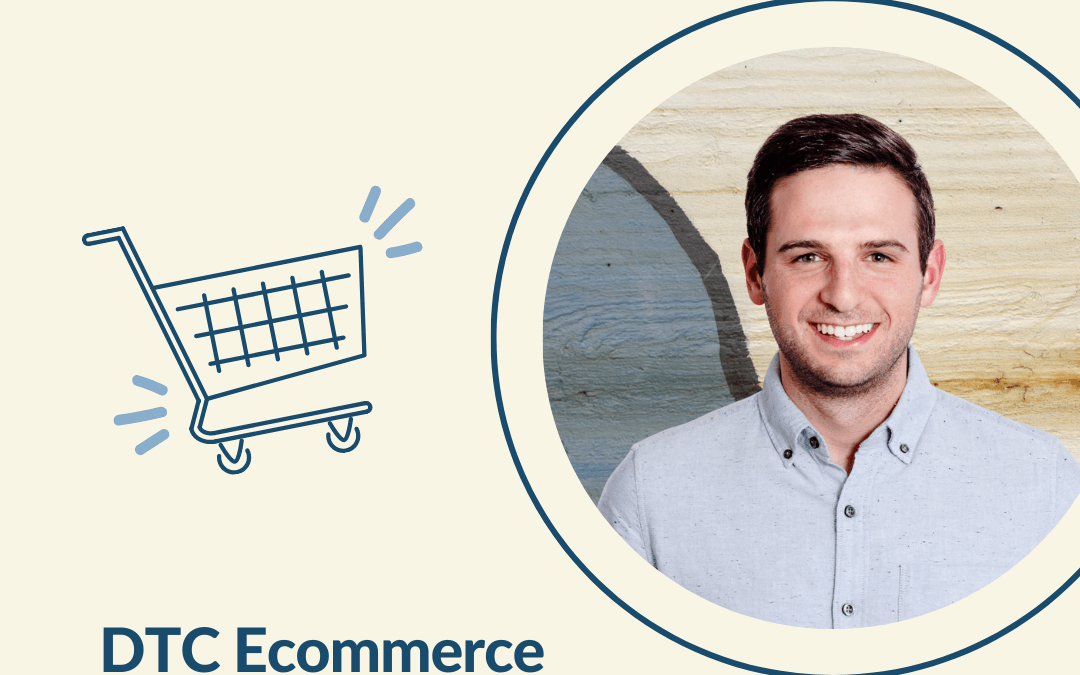Selling direct to consumer can create new sales opportunities for your food brand, but it can still be hard to stand out with the marketplace as crowded as it is.
Today on the Real Food Brands Marketing Podcast, host and Food Brand Strategist Katie Mleziva sits down with Adam Pollack, Head of Content at Rodeo CPG, who has some practical tips for how to set up your DTC eCommerce website and what metrics you should be looking at along the way.
Resources for New CPGs
Adam founded two different CPG (consumer packaged goods) brands over the years but found it was hard to find help to grow his food business. “I found myself constantly needing resources to guide me on my journey and just coming empty—not really having a good community or a good understanding around where these resources exist,” he says. In his role at Rodeo, he creates resources for clients and the broader CPG community to solve this exact problem.
To help newer CPG founders get started, Adam and the Rodeo CPG team created the Jumpstart program. “It stemmed from a personal pain point,” he says, “it frustrated me that you needed quite a bit of money to work with Rodeo as a services client and we didn’t have something to offer for these very young brands.” The content covers everything from how to turn an idea into a viable product to how to produce and transport that product efficiently. It also covers DTC (direct-to-consumer eCommerce), which is what we discuss in this episode.
DTC: The Channel You Own
“For me, the most important reason that direct to consumer is so compelling is ownership—it’s the only channel that, as a brand, you truly own,” Adam says. If you’re selling on Amazon, they own the customer, or, if you’re in a typical retail setting, you’re selling to someone else’s customer. When you own the customer, you can get data to understand who’s buying your product, and you can create a dialogue with them to get to know them better.
The downside for DTC is that it’s costly, with more complicated shipping requirements and logistics. It may not make sense if your product is perishable or has a lower price point, but Adam offers 4 tips to consider as you build your DTC channel.
1. Infuse Your Brand into the eCommerce Website
While we want to make transactions easy, we need to go beyond a transactional website and share your brand story. We want to invite customers into your story. “There are so many eCommerce sites that lack any sort of personal connection, any credibility,” Adam says, “videos, visuals…anything that lets your brand’s or your own personality shine through are so important and are the connection that most customers are looking for when they land on your website.”
2. Share Social Proof
Buyers want to trust that you’re legitimate. Any social proof you can show, whether that’s a third-party tool that displays recent purchases with a name and location (we’re pretty sure you’ve seen these in action!), or testimonials (preferably videos straight from your customers, if possible!).
You can also share any media or publicity you’ve received to help shoppers see there is a buzz about your brand. “This is why every brand that gets good publicity shows where they’ve been featured on their site—it’s a shorthand for ‘we’re legitimate,’” Adam says. Videos from real customers are the best for this.
Katie reinforced that these points are important especially when people can’t try the product before buying, as is often the case with DTC unless someone has also found your brand in a store. We can use social proof as a way to reduce friction in the buying process and reduce the concern that they will be wasting their money on a new product.
3. Stay in Touch
“Chances are someone lands on their site and they’re not going to buy,” Adam says, “there’s a journey that needs to happen and there’s a sales cycle, even with a $10 or $15 product online.” He recommends optimizing your landing page around capturing an email so you can continue the conversation. But how do you get people to give you their email – and then open your emails?
You need to give them value, whether that’s recipes, resources, or anything else that might be relevant to your core customer. Even something as simple as a peek behind the scenes in your business can be incredibly effective in creating connections and engagement.
4. Keep Your Design Simple
You want concise messaging about your products and strong visuals. Adam’s put together a blog post highlighting some brands that are doing it right to give you a better idea of what he means.
Adam also shared key metrics to review regularly once you’ve launched your DTC site, so be sure to listen to the full episode because it’s packed full of helpful tips.
Now, let’s go shake up shopping carts!
Quotes:
“For me, the most important reason that direct to consumer is so compelling is ownership—it’s the only channel that, as a brand, you truly own.” – Adam Pollack
“Videos, visuals…anything that lets your brand’s or your own personality shine through are so important and are the connection that most customers are looking for when they land on your website.” – Adam Pollack
“Chances are someone lands on their site and they’re not going to buy, there’s a journey that needs to happen and there’s a sales cycle, even with a $10 or $15 product online.” – Adam Pollack
“What’s the story that you’re inviting people into so that they’re a part of it, too?” – Katie Mleviza
In This Episode:
- How Adam’s experience founding two CPG businesses led him to his role at Rodeo CPG.
- Why DTC is the only place you truly own your relationship with your consumers.
- Why visuals are so important on your eCommerce website.
- How social proof gives you the credibility you need to remove friction for buyers.
- Why an email address is so important to capture on your eCommerce website.
- What works for eCommerce in terms of design, including some examples.
- The metrics you should really pay attention to instead of vanity metrics.
- Why Rodeo CPG launched their new program called Jumpstart for early-stage CPG brands.
Resources:


